2025 Harvest Update: Coffee Market Hits an All Time High

The coffee industry is facing one of its most turbulent periods in recent history. Global coffee prices have surged to record highs, driven by market speculation, climate challenges, and supply chain disruptions. While this may seem like a windfall for coffee producers, the reality is far more complex.
In Guatemala, the latest harvest season is unfolding under these uncertain conditions. Farmers have been navigating rising production costs, unpredictable weather, and a volatile market that doesn’t always translate higher prices into better livelihoods. As an industry, we must reconsider how coffee is traded—ensuring more equity within our own supply chain and sharing risk by fostering circular relationships and long-term sustainable partnerships where we all profit. Even when the market is down, our industry should poise the question, what is behind cheap coffee? And use this time as an opportunity to fix our industry, our business models, and evaluate more sustainable ways to trade coffee.
Why Are Prices Surging?
While directly traded specialty coffee tends to offer a more consistent pricing structure, commodity coffee prices have skyrocketed due to market instability. As of February, global Arabica futures hit a record high above $4.00 per pound—over 100% increase within the past year. Still, specialty coffee pricing is affected by the C-Market and it is important for all to understand the influencing factors that drive global prices. At the moment these price jumps are largely driven by:
Supply and Demand Issues: Unfavorable weather conditions in Brazil and Vietnam, the world's two largest coffee producers, have reduced production. The Red Sea disruptions caused by the Houthis have also contributed to price increases.
Climate Events: Weather anomalies, including droughts in Brazil and hurricanes in Central America, have disrupted global supply.
Production Costs: Wage increases, rising input costs due to inflation, and transportation expenses are squeezing margins for producers.
Labor Shortages: Migration trends and a declining rural workforce have left many farms without enough hands during peak harvest.
Market Volatility: Wars, unstable geopolitical environments, and logistical issues such as container shortages since Covid-19 add to market speculation. Specifically political tensions and tariff implementations by the United States to the third largest coffee producing country, Colombia, have added to speculation and increased volatility to the market.
For years, green coffee prices have remained stagnant, while retail prices of roasted coffee continue to rise and adjust for inflation in consuming countries. Although this might seem like a "great" year for producers, high market volatility benefits no one. Despite being a price discovery system for 'commodity' coffee, the impact on specilty is undeniable. Now more than ever, our industry must prioritize partnerships to create stability within the coffee value chain. Direct-to-consumer business models, like ours at Gento, play a crucial role in keeping more of that value at the origin.

Photo: Fusion Media Limited, Investing.com
HARVEST 2025 - Updates from Guatemala
Labor Shortages and Rising Costs Pose Significant Challenges
A pressing issue for Guatemalan coffee producers is the scarcity of labor, exacerbated by migration trends that have reduced the available workforce in coffee-growing regions. This shortage is particularly acute during peak harvest periods, such as January, leading to difficulties in timely cherry picking. Delays can result in overripe cherries remaining on plants, causing potential losses in both yield and quality.
Beyond the scarcity of skilled labor, this year, Guatemala is facing a 10% increase in minimum wage. Many pickers knowing that coffee prices are high are demanding higher pay. For coffee farms, where hand labor accounts for around 70% of total costs, this is a significant expense. Combined with inflation and rising costs from service providers, the reality is that producing specialty coffee is more expensive than ever.

Coffee Productivity and Quality
In the latter half of 2024, Guatemala experienced beneficial rainfall patterns, particularly from June onward, which have positively influenced coffee cherry development. However, year after year, coffee producers are dependent of favorable weather conditions to determine their Harvest. The prevalence of Coffee Leaf Rust and other diseases is still a major challenge. With the increase of fertilizer and other input costs, and labor shortages, farm maintenance and desease preventions can poise a great challenge to the future of coffee farming.

Looking Ahead
As the coffee industry navigates a complex landscape shaped by both opportunity and adversity, we are at a critical juncture. It is essential to reflect on how coffee has been traded historically and identify necessary changes to ensure a sustainable future for all. Despite fluctuations in green coffee prices, the retail price index has remained consistently high, highlighting a growing disparity between producer earnings and consumer costs. Addressing these imbalances is crucial for long-term industry stability.
Consumers can expect a 20%-50% rise in coffee prices. While many roasters may opt to use cheaper coffees in their blends, the fact remains that producing any grade of coffee is more expensive now than it was years ago. Will this mark a new era for coffee? Where as an industry we re-evaluate pricing strategies based on sustainable and stable partnerships where both buyers and producers are profitable? The Transparent Trade Coffee developed the Transparent Coffee Guide, which has been an interesting tool for the industry to better understand pricing of specialty coffee and pledge towards 'transparent' trade by making informed decisions. Understanding price discovery and profitability for each actor in the value chain is crucial for our future.
As we navigate the challenges of the 2025 harvest and ongoing market volatility, one thing remains clear: long-term, direct relationships are more important than ever. By fostering transparent partnerships between producers, roasters, and consumers, we can create a more resilient and sustainable coffee supply chain. Circular relationships—where value, knowledge, and resources flow mutually—ensure that farmers receive fair compensation, quality remains high, and all businesses can plan for the future with confidence. Investing in these connections is not just about weathering market fluctuations; it’s about building a thriving, sustainable coffee industry for all.




Leave a comment